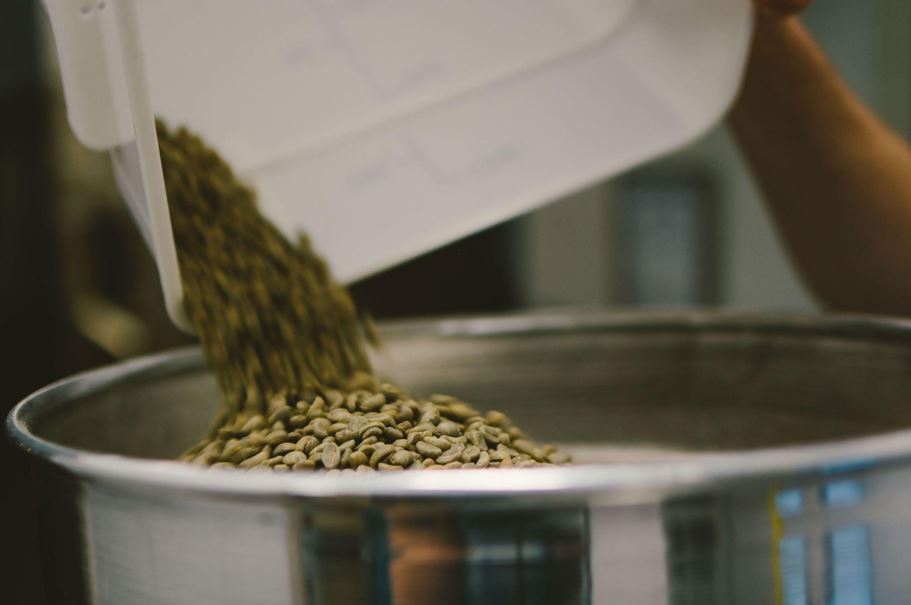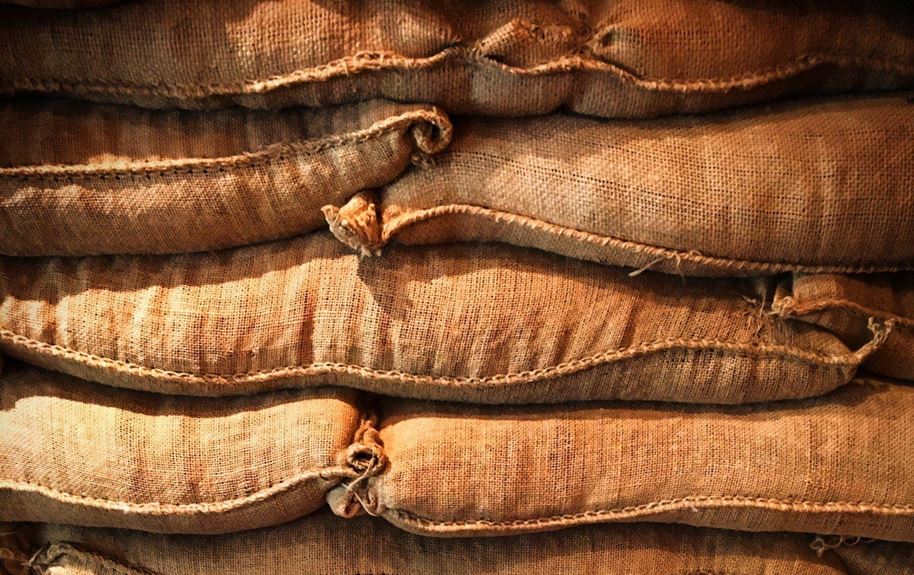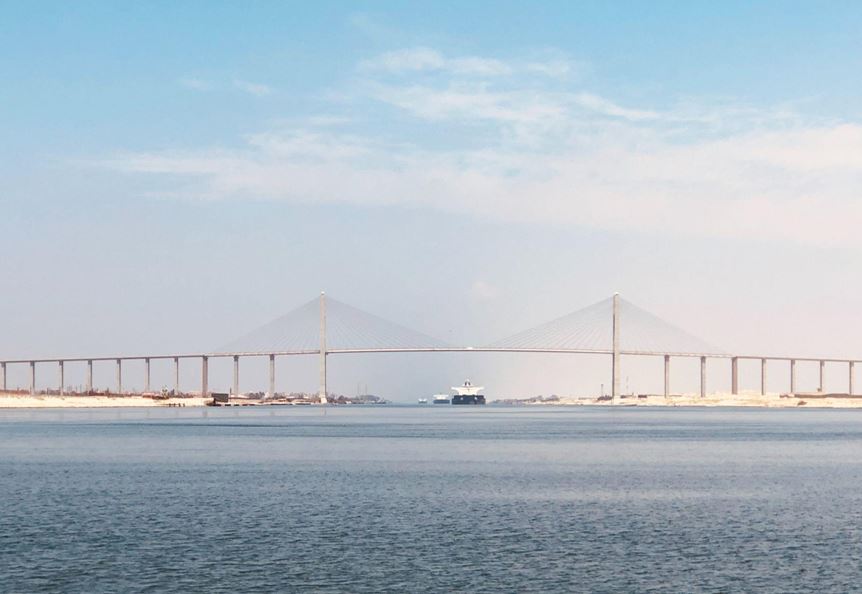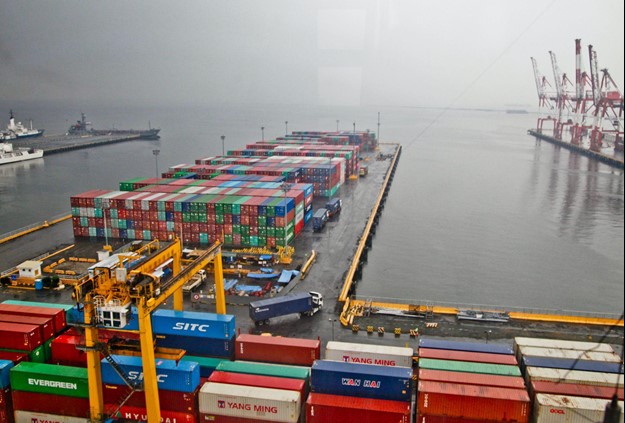Logistics & challenges for shipping coffee
Before they are roasted, ground, and brewed, green coffee beans are exported from producing regions around the world, and generally travel by sea freight in shipping containers.
When green coffee is shipped, time is of the essence. This is because the flavours of the beans can be influenced and irreversibly altered by undesirable odours and flavours, unwanted moisture, and even fluctuating temperatures if they sit for too long in an unmonitored environment.
So, how does the supply chain make sure green coffee gets from A to B while retaining as much quality as possible? And how have recent events in global logistics affected this? Read on to find out.

Not just any shipping container
Green coffee is a raw agricultural product that is sensitive to light and moisture. Optimum levels of the latter should be around 11% to 14% once the beans are processed and dried. Beyond these, the coffee’s quality will start to diminish.
A stable temperature should also be maintained to ensure quality. As temperatures climb, carbon dioxide will leave green coffee more quickly, causing it to become stale and lose some of its vibrancy when roasted. As previously mentioned, the beans can also absorb any surrounding odours or flavours if improperly stored.
These various factors are why green coffee needs to be shipped in a food-grade container which must meet several requirements.
Firstly, the container should not have been previously used to move anything with strong (such as chemical) odours, or have been cleaned with a strong disinfectant, otherwise the coffee will take on the underlying odours.
The container also needs to protect the green beans from moisture. This can be done by using plastic or cardboard liners within a metal container and “stuffing” it. By filling containers tightly and layering bags in a way that reduces gaps and airflow, the green beans can stay fresher for longer.
However, in recent months, acquiring food-safe shipping containers has become easier said than done. Thanks in no small part to the Covid-19 pandemic, we are currently at the mercy of a container shortage. This affects the price of the containers themselves, and subsequently the price of the food product in question.
While the manufacture of shipping containers has increased this year, it has not been enough to solve the problem. Some shipping lines are even looking to capitalise on the high shipping prices, according to the Wall Street Journal.
In a recent article, the publication said: “US exporters say shipping lines are refusing to send boxes inland to pick up their cargo, because they are trying to get empty containers back to factories in Asia as quickly as possible to take advantage of historically high shipping prices.”

How have world events affected global shipping & logistics?
In the past 18 months, a number of events have affected global shipping, not least of which was the Covid-19 pandemic. Even today, some ports are closed or operating at limited capacity because of the novel coronavirus.
Earlier in the year, the Chinese port of Yantian suffered from an outbreak in cases, which caused it to temporarily shut. Yantian is a significant enough port that its closer disrupted supply chains around the world.
Another incident that had a similar kind of “ripple effect” was the Suez Canal crisis in March, when the Taiwanese ship Ever Given turned and blocked all maritime movement through the canal.
This affected many industries and supply chains around the world, since 12% of global trade passes through the Suez Canal each day. In the coffee sector, this delayed green beans coming from Asia and Africa.
As previously mentioned, the global container shortage is also a major issue. While this is often the case in coffee supply chains during peak months, this year, several global factors have led to less containers everywhere.
Ultimately, this means that we now have containers that are not distributed efficiently. Many are simply not in the right place at the right time because the situation is hard to forecast, even for industry experts.
These various issues continue to arise, each affecting the movement of goods across the sector in a unique way. Alongside those mentioned, others include the political protests and export blockades in Colombia earlier in the year, regional lockdowns in Vietnam’s Central Highlands, unpredictable post-pandemic consumer demand, and fluctuating coffee prices.
Stephen Bannister, our managing director at Condesa, elaborates. “Services by many steamship companies have been cancelled or rerouted,” he says. “This means empty containers have a habit of building up in the wrong place, and reduced services slow the need for them to be where they are needed.
“We continue to see the wheels of global container logistics (and especially the small segment of clean food-grade containers) slow down.”
Altogether, this means one thing for importers above all else: it is becoming more expensive for importers to ship green beans, which are also taking longer to arrive. In turn, coffee roasters have to absorb higher prices and accept shipping delays.

So, what can coffee roasters and green buyers do to keep business running smoothly?
Firstly, good planning and communication with your partners and teams is now more essential than ever before. Speak to your green coffee supplier to understand the market properly and appreciate why shipping is taking longer.
Secondly, try to adjust your timelines and your expectations. When sourcing green coffee, plan at least three to six months ahead and anticipate delays. On the roasting side, take a long hard look at your current inventory and how long it will last.
Thirdly and finally, do everything you can to move quickly on your side. Getting pre-shipment samples evaluated and approved in a timely fashion will help, as will offering clear, straightforward instructions to your suppliers. Ultimately, logistics is a team effort – and at a time like this, greater collaboration definitely can’t hurt.

